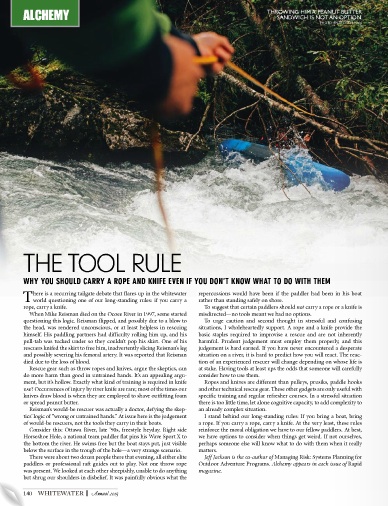There is a recurring tailgate debate that flairs up in the whitewater world questioning one of our long standing rules: if you carry a rope, carry a knife.
When Mike Reisman died on the Ocoee River in 1997, some started questioning this logic. Reisman flipped, and possibly due to a blow to the head, was rendered unconscious, or at least helpless in rescuing himself. His paddling partners had difficulty rolling him up, and his pull-tab was tucked under so they couldn’t pop his skirt. One of his rescuers knifed the skirt to free him, inadvertently slicing Reisman’s leg and possibly severing his femoral artery. It was reported that Reisman died due to the loss of blood.
Rescue gear such as throw ropes and knives, argue the skeptics, can do more harm than good when in the wrong or untrained hands. It’s an appealing argument, but it’s hollow. Exactly what kind of training is required in knife use? Occurrences of injury by river knife are rare, and most of the times they have drawn blood is when they were employed to shave outfitting foam or spread peanut butter.
That Reisman’s would-be rescuer was actually a doctor defies the skeptic’s logic of “wrong or untrained hands.” At issue here is the judgement of would-be rescuers, not the tools they carry in their boats…Click here to continue reading in the free desktop edition of Rapid Media’s 2015 Paddling Buyer’s Guide.
This article originally appeared in the 2015 Paddling Buyer’s Guide. Read the entire issue on your desktop, Apple or Android device.




